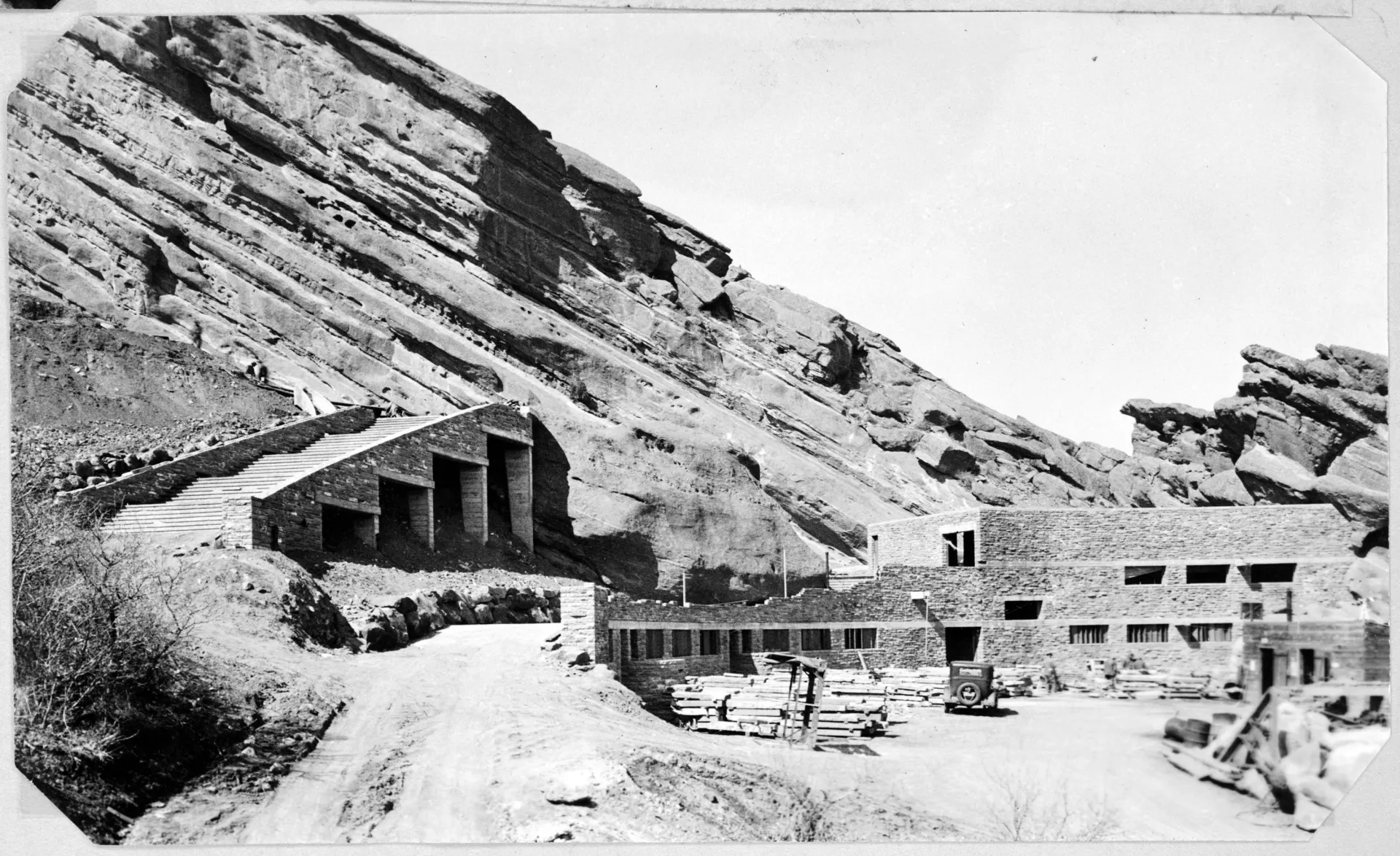Colorado, famous for its magnificent natural beauty, is also a treasure trove of rich history, particularly the cultural heritage of its indigenous peoples. From ancient adobe huts to intricately carved stone structures, each site tells a story of the past, of the lives and culture of the tribes that once inhabited this land.
Red Rocks Amphitheatre, a unique architectural marvel nestled among giant sandstone formations, is not only a globally renowned performance venue but also a testament to the synergy between nature and human craftsmanship. Few know that the construction of this amphitheater in the 1930s utilized labor from the Civilian Conservation Corps (CCC), a crucial relief program during the Great Depression.
The Legacy of the Civilian Conservation Corps (CCC) at Red Rocks
On May 9, 1936, Denver Mayor Benjamin Franklin Stapleton and Parks and Improvements Director George Cranmer received approval from U.S. Secretary of the Interior Harold Ickes to utilize the Civilian Conservation Corps (CCC) to build the Red Rocks Amphitheatre. George Cranmer emphasized that Denver officially employed English spelling. The CCC, established by the Reforestation Relief Act on March 31, 1933, aimed to rescue both unemployed youth and endangered lands during the Great Depression by putting men to work on forest and grassland conservation. The CCC was a cornerstone program of President Roosevelt, who initiated a prototype program as governor of New York.

The construction of Red Rocks Amphitheatre was no easy task. To create a perfect performance space with breathtaking views from every seat, CCC workers had to move 50,000 cubic feet of earth and rock. Despite the assistance of machinery, much of the work was done manually with picks, shovels, and rock sledges.
Red Rocks: A Fusion of Architecture and Nature
As one of Colorado’s most spectacular settings, Red Rocks has attracted the state’s most famous architecture. Its amphitheatre was the masterwork of Colorado’s esteemed architect, Burnham Hoyt. After the National Park Service approved Hoyt’s plans, the CCC started leveling the seating area between Ship and Creation Rocks. Though Cranmer assured the mayor and city council that this would be an inexpensive and simple task, he soon realized that significant dynamite would be necessary.
To grade the amphitheatre so that all seats would offer a great view of the stage, CCC workers removed 50,000 cubic feet of earth and rock. Although steam shovels accomplished some of the heaviest work, most of the muscle came from the picks, shovels, wheelbarrows, and stone sleds of the CCC workers, earning a dollar a day.
After leveling the seating area, workers completed the amphitheatre by laying more than 90,000 square feet of sandstone, quarried in Lyons, matching the red and rock-like texture at Red Rocks. CCC workers built the auditorium with 800 tons of quarried stone and 30,000 pounds of reinforcing steel. The project, estimated to take two years, actually took five. Materials cost $115,881.87, and labor, paid by the federal government to the CCC and WPA workers, amounted to $357,281.69.
Other Sites Reflecting Colorado’s Indigenous History
Besides Red Rocks, Colorado boasts numerous other historical sites related to its indigenous peoples, the region’s first inhabitants. National parks and reserves preserve remnants of the Ute, Apache, Cheyenne, and Arapaho tribes, with adobe huts, stone structures, and rock art.
Mesa Verde National Park
One of the most significant destinations is Mesa Verde National Park, a UNESCO World Heritage site. It is famous for its cliff dwellings built by the Ancestral Puebloans (ancestors of today’s Pueblo people) from the 6th to the 12th centuries. These unique structures were not just homes but also religious and cultural centers for the community.
Hovenweep National Monument
Hovenweep National Monument is another archaeological area where you can explore the ruins of ancient villages, watchtowers, and dams built by the Ancestral Puebloans. These constructions demonstrate the ingenuity and creativity of the indigenous people in adapting to harsh environments.
Chimney Rock National Monument
Chimney Rock National Monument is a sacred site for the Pueblo people, featuring towering rock formations and remnants of ceremonial structures. It is believed to be linked with important astronomical events and was the center of a vast trading network.
Conclusion
The historical sites of indigenous peoples in Colorado are not only ancient architectural wonders but also vivid witnesses to a rich and enduring culture. Exploring and preserving these heritages help us better understand the past and appreciate the cultural diversity of our world. Visit Colorado and uncover the intriguing stories hidden within these historical sites to gain a deeper insight into the land and its people.
